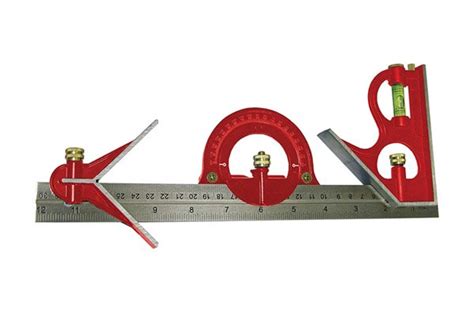From Field to Workshop: Combination Square Uses on the Farm
The humble combination square—that trusty tool with a sliding head and a level—is far more versatile than many realize. While a staple in any woodworker's arsenal, its applications extend far beyond the workshop, proving invaluable on the farm for a variety of tasks. From basic carpentry to precise measurements, the combination square's precision and adaptability make it an essential tool for any farmhand or homesteader.
What is a Combination Square?
Before diving into its farm applications, let's briefly define the tool. A combination square typically consists of a sturdy steel blade with markings in inches and/or millimeters, a sliding head that can be locked at any point along the blade, and a level incorporated into the head. This simple design allows for a surprising array of functions, including:
- Measuring: Accurate measurements of length, depth, and width.
- Marking: Creating precise lines for cuts and joinery.
- Squaring: Ensuring right angles in construction or repairs.
- Leveling: Checking the level of surfaces for building, fence construction, and more.
- Scribing: Marking angles and curves.
Combination Square Uses on the Farm: Beyond the Workshop
The combination square's practicality shines brightly in the diverse environment of a farm. Let's explore some of its key applications:
1. Fence Building and Repair:
Building and maintaining fences is crucial on any farm. The combination square helps ensure:
- Square Posts: Accurate post placement is essential for fence stability. The square helps ensure posts are perfectly plumb and at right angles to the fence line.
- Level Rails: The integrated level guarantees horizontal rails, improving fence aesthetics and functionality.
- Precise Measurements: Accurately measuring rail lengths and distances between posts for consistent fence construction.
2. Barn and Outbuilding Construction/Repair:
Farm buildings require regular maintenance and occasional repairs. A combination square is useful for:
- Squaring Frames: Building square window and door frames ensures proper fit and functionality.
- Checking Angles: Verifying the squareness of corners during construction or repair of walls and roofs.
- Accurate Measurements: Precisely measuring materials for new construction or replacements.
3. Equipment Maintenance and Repair:
Farm equipment often requires adjustments and repairs. The combination square can assist in:
- Checking Alignment: Ensuring proper alignment of components, such as wheels or pulleys, on machinery.
- Measuring Wear: Assessing wear and tear on parts by precisely measuring dimensions.
- Making Precise Adjustments: Guiding adjustments to ensure accurate positioning of components.
4. Woodworking Projects:
Many farm tasks involve woodworking, from creating simple repairs to constructing more complex projects. The combination square assists with:
- Precise Cutting: Ensuring straight, accurate cuts for various wooden components.
- Accurate Joiners: Creating precise joints for strong, durable constructions.
- Marking Angles: Making accurate markings for angled cuts.
5. General Farm Measurements:
Beyond specific projects, the combination square's utility extends to everyday farm measurements. This includes:
- Measuring Grain Bins: Assessing the volume or dimensions of storage bins.
- Measuring Livestock Pens: Checking dimensions and squareness of livestock enclosures.
- General Length Measurements: Precisely measuring materials, distances, or dimensions as needed.
What are the benefits of using a combination square?
- Portability: Compact and easily carried in a toolbox or pocket.
- Accuracy: Provides precise measurements for various tasks.
- Versatility: Performs multiple functions with a single tool.
- Durability: Constructed from durable materials for long-lasting use.
- Affordability: A relatively inexpensive tool that offers exceptional value.
Choosing the Right Combination Square for Farm Use
When selecting a combination square for farm use, consider:
- Blade Length: A longer blade provides greater reach for larger measurements.
- Material: Opt for high-quality steel for durability and accuracy.
- Markings: Choose a square with clear, easy-to-read markings in both inches and metric units.
The combination square is a deceptively simple yet extraordinarily versatile tool. Its presence on a farm is a testament to the value of precision and adaptability in a demanding environment. By understanding its diverse applications, farmers and homesteaders can harness its full potential to enhance efficiency, accuracy, and the overall quality of their work.

